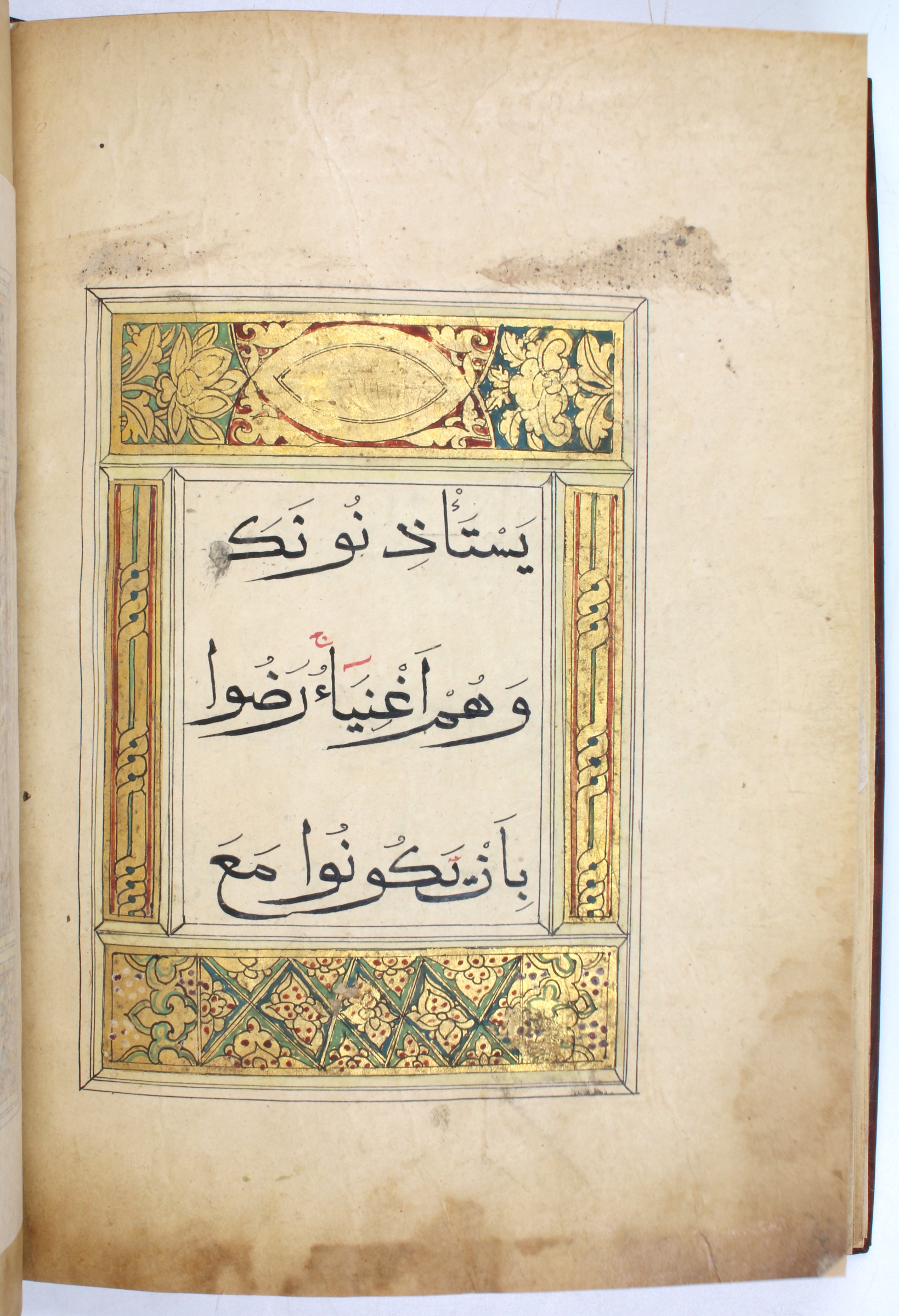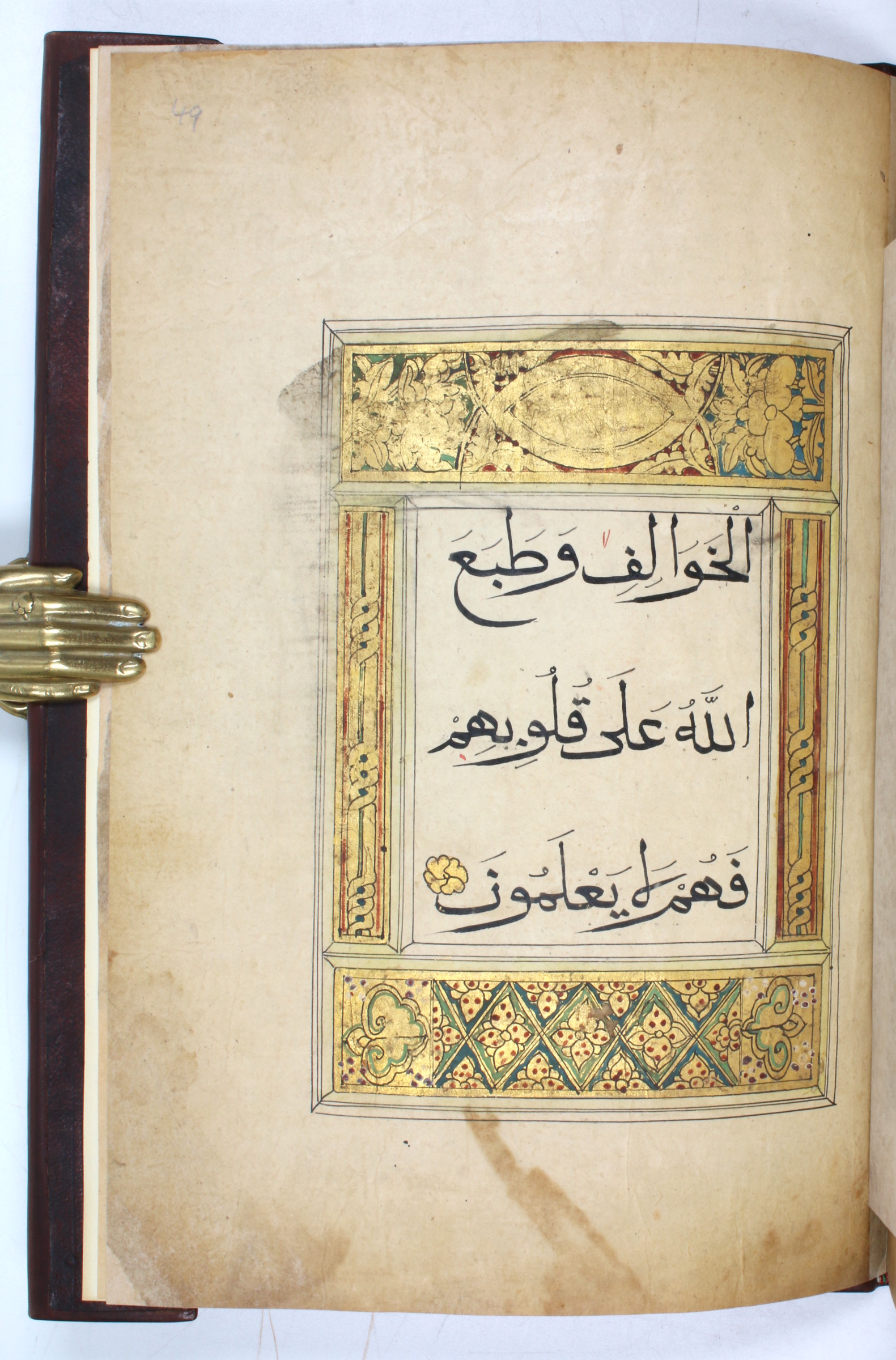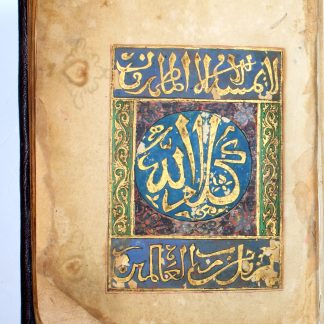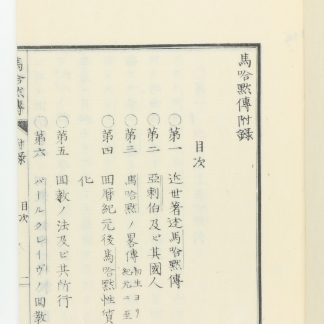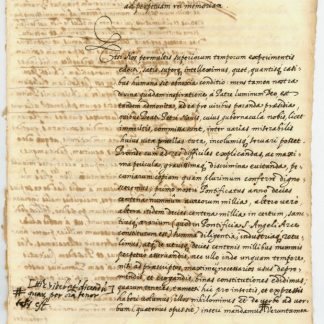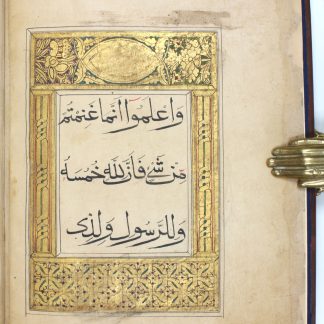Chinese Muslim manuscript with two surahs, describing the battles of Badr and Tabuk
An illuminated Qur'an, Juz' X.
8vo (200 x 288 mm). Arabic manuscript on paper. 50 ff. Script in bold black sini, 5 lines within red double rules, punctuation in red, gold rosette verse markers outlined in black, surah headers in gold, gold and polychrome marginal decoration, opening bifolium with red, blue and black and gold illuminated panels around three lines of text. Restored 18th century red leather with fore-edge flap, elaborately ruled and stamped in blind.
€ 9,500.00
Beautifully illuminated Qur'an Juz' (one of thirty parts of varying lengths into which the Qur'an is divided) written in 18th century China. Arab presence in China dates back as far as the first Caliphate: the Prophet's companion Sa'd ibn Abi Waqqas is traditionally credited with introducing Islam to China as ambassador in 650. Indeed, many major cities in China, such as Xi'an (or Chang'an, as it was known during the height of the Silk Road) and Beijing boast a long and rich Muslim history. Qur'an sections written by Chinese Muslims show Chinese influence clearly in both the decoration and the script, which is derived from naskh. The section of the Qu'ran copied here is the tenth Juz', which comprises surah 8, al-Anfal ("The Spoils") and surah 9, al-Tawbah ("The Repentance"). These two surahs form a set, and are best read as a pair. Both give an account of battles: al-Anfal describes the Battle of Badr, while al-Tawbah describes the Battle of Tabuk.
Covers fully rebacked, with some mild warping; some paper repair and reinforcement. Altogether a fine example of the Chinese Muslim manuscript tradition. Provenance: Private UK collection formed in the 1960s and 1970s.









